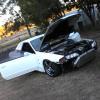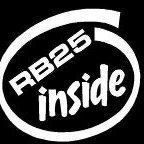Rear Strute Brace Preload?
Announcements
-
Similar Content
-
Latest Posts
-
By Dose Pipe Sutututu · Posted
Yeah same as yours, however just sprung centre. Trying to prolong the box going KAPOW as long as possible lol -
By mtopxsecret6 · Posted
Hi everyone, I'm chasing the factory rear parcel shelf speakers for a coupe R32. Just seeing what's out there? Thanks -
Did you get the 230mm version? I’ve got the solid center version and it’s a dream to drive
-
Even GKTech's short nuts are only intended for 15mm spacers, and the OP's look like they might be only 10mm. So he'd have to rely on pockets in the wheel hub face to accept what sticks out past the spacer's face.
-
By soviet_merlin · Posted
It's a shame to see it go. Fingers crossed the sale works out okay and it goes to someone decent. Everything considered this is a steal. I would be tempted if I wasn't poor
-







Recommended Posts
Create an account or sign in to comment
You need to be a member in order to leave a comment
Create an account
Sign up for a new account in our community. It's easy!
Register a new accountSign in
Already have an account? Sign in here.
Sign In Now